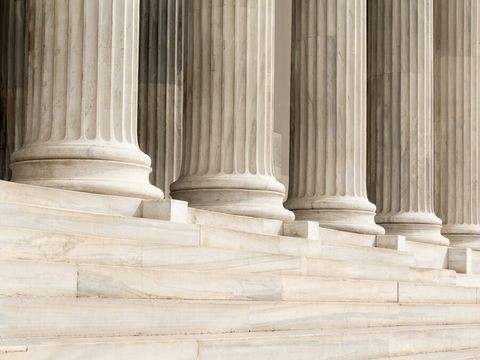CDC Updates Its Guidance for Necessary Quarantine Period
Client Alert | 3 min read | 12.04.20
On December 2, 2020, the Centers for Disease Control and Prevention (the CDC) updated its guidance regarding how long an individual must quarantine after being exposed to COVID-19. While the CDC continues to endorse a quarantine period of 14 days after last exposure, it has now provided two additional options for how long quarantine should last. Based on the availability of COVID-19 testing, individuals without symptoms can shorten their quarantine period to 10 days after exposure or to 7 days after receiving a negative test result. Individuals can take either the PCR or antigen test up to 48 hours before the seventh day of the last exposure. This means that individuals can take a PCR or antigen test on the fifth day after exposure but they must quarantine for at least 7 days regardless of when they receive the negative test result. If they do not receive their test result within the 7 day period, they cannot discontinue quarantine until the receipt of a negative test result. After discontinuing quarantine, individuals should monitor for symptoms of COVID-19 until 14 days have passed since their last exposure. If symptoms are present before the end of the 14 day period, individuals must immediately self-isolate and contact their local public health authority or healthcare provider. Individuals who test positive on the seventh day but have no symptoms must self-isolate for an additional 10 days after the last test. Individuals who develop symptoms after testing positive must self-isolate until all of the following conditions have been met: (1) at least 10 days have passed since the individual’s symptoms first appeared, (2) the individual has been fever-free for at least 24 hours without the use of fever-reducing medications and (3) there has been improvement in the individual’s other symptoms.
The change in the CDC’s guidance reflects its recognition that the 14 day quarantine rule can be onerous for many people and a shorter quarantine period lessens the stress on the public health system. However, the CDC also noted that local health authorities have the final decision on how long quarantine should last in their respective communities. This change comes just over a month after the CDC expanded its definition of what it means to have been in “close contact” with an individual infected with the virus. Previously the CDC defined “close contact” as being within 6 feet of an infected person for 15 consecutive minutes up to two days before onset of the illness. The new definition of “close contact” includes being within 6 feet of an infected person for a cumulative total of 15 minutes over a 24 hour period starting two days from the onset of the illness (or, if asymptomatic, 2 days from when the specimen was collected that yielded a positive test result).
It should be noted that many state and local orders and guidelines for businesses are based on the CDC’s prior guidance and may not yet be updated to reflect the CDC’s current guidance. For example, travelers entering New York from another state (except for Pennsylvania, New Jersey, Connecticut, Massachusetts and Vermont) are required to quarantine for 14 days, unless they follow specific protocols to test out of the requirement. Similarly, travelers entering Chicago from states with high community spread must quarantine for 14 days upon arrival while travelers entering Chicago from states with lower community spread may quarantine for 14 days or receive a negative pre-arrival COVID test result (no longer than 72 hours prior to their arrival). Whether these jurisdictions, and others with similar requirements, will shorten the mandatory quarantine period based on this new guidance remains to be seen. Despite shortening the recommended quarantine time, the CDC does “continue[] to endorse quarantine for 14 days and also recognizes that any quarantine shorter than 14 days balances reduced burden against a small possibility of spreading the virus.”
In light of these changes, employers should take the opportunity to review their policies and practices and consult with counsel on whether they should update to reflect these changes, if they can do so consistent with applicable orders, rules, and regulations.
Contacts
Insights
Client Alert | 5 min read | 12.12.25
Eleventh Circuit Hears Argument on False Claims Act Qui Tam Constitutionality
On the morning of December 12, 2025, the Eleventh Circuit heard argument in United States ex rel. Zafirov v. Florida Medical Associates, LLC, et al., No. 24-13581 (11th Cir. 2025). This case concerns the constitutionality of the False Claims Act (FCA) qui tam provisions and a groundbreaking September 2024 opinion in which the United States District Court for the Middle District of Florida held that the FCA’s qui tam provisions were unconstitutional under Article II. See United States ex rel. Zafirov v. Fla. Med. Assocs., LLC, 751 F. Supp. 3d 1293 (M.D. Fla. 2024). That decision, penned by District Judge Kathryn Kimball Mizelle, was the first success story for a legal theory that has been gaining steam ever since Justices Thomas, Barrett, and Kavanaugh indicated they would be willing to consider arguments about the constitutionality of the qui tam provisions in U.S. ex rel. Polansky v. Exec. Health Res., 599 U.S. 419 (2023). In her opinion, Judge Mizelle held (1) qui tam relators are officers of the U.S. who must be appointed under the Appointments Clause; and (2) historical practice treating qui tam and similar relators as less than “officers” for constitutional purposes was not enough to save the qui tam provisions from the fundamental Article II infirmity the court identified. That ruling was appealed and, after full briefing, including by the government and a bevy of amici, the litigants stepped up to the plate this morning for oral argument.
Client Alert | 8 min read | 12.11.25
Director Squires Revamps the Workings of the U.S. Patent Office
Client Alert | 8 min read | 12.10.25
Creativity You Can Use: CJEU Clarifies Copyright for Applied Art
Client Alert | 4 min read | 12.10.25
Federal Court Strikes Down Interior Order Suspending Wind Energy Development





